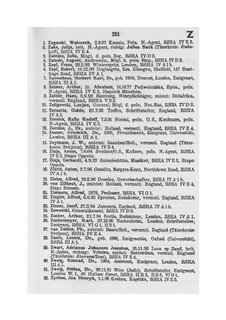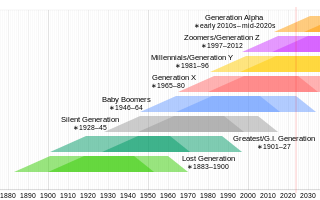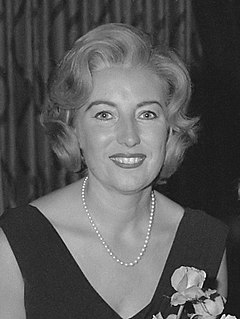 W
W1943 steel cents are U.S. one-cent coins that were struck in steel due to wartime shortages of copper. The Philadelphia, Denver, and San Francisco mints each produced these 1943 Lincoln cents. The unique composition of the coin has led to various nicknames, such as wartime cent, steel war penny, zinc cent and steelie. The 1943 steel cent features the same Victor David Brenner design for the Lincoln cent which had been in use since 1909.
 W
WA Balloon Site, Coventry is an oil on canvas painting undertaken in 1942 by the British artist Laura Knight. It portrays a group of people—mostly women—working to launch a barrage balloon on the outside of Coventry, an industrial city in the Midlands that was the target of a German bombing raid in November 1940, when over 10,000 incendiary bombs were dropped on the city.
 W
WThe Sonderfahndungsliste G.B. was a secret list of prominent British residents to be arrested, produced in 1940 by the SS as part of the preparation for the proposed invasion of Britain. After the war, the list became known as The Black Book.
 W
WZhang Dinghuang ; 1895–1986), also known as Zhang Fengju was a Chinese-American antiquarian, linguist, literary critic, poet, and translator. He was born in Nanchang and an expert in antique manuscripts. Zhang was a supporting but key figure of the rich 20th century Chinese literary movements.
 W
WThe Entertainments National Service Association (ENSA) was an organisation established in 1939 by Basil Dean and Leslie Henson to provide entertainment for British armed forces personnel during World War II. ENSA operated as part of the Navy, Army and Air Force Institutes. It was superseded by Combined Services Entertainment (CSE) which now operates as part of the Services Sound and Vision Corporation (SSVC).
 W
WVeronica Foster,, popularly known as "Ronnie, the Bren Gun Girl", was a Canadian icon representing nearly one million Canadian women who worked in the manufacturing plants that produced munitions and matériel during World War II.
 W
WThe Four Freedoms is a series of four 1943 oil paintings by the American artist Norman Rockwell. The paintings—Freedom of Speech, Freedom of Worship, Freedom from Want, and Freedom from Fear—are each approximately 45.75 inches (116.2 cm) × 35.5 inches (90 cm), and are now in the Norman Rockwell Museum in Stockbridge, Massachusetts. The four freedoms refer to President Franklin D. Roosevelt's January 1941 Four Freedoms State of the Union address in which he identified essential human rights that should be universally protected. The theme was incorporated into the Atlantic Charter, and became part of the charter of the United Nations. The paintings were reproduced in The Saturday Evening Post over four consecutive weeks in 1943, alongside essays by prominent thinkers of the day. They became the highlight of a touring exhibition sponsored by The Post and the U.S. Department of the Treasury. The exhibition and accompanying sales drives of war bonds raised over $132 million.
 W
WThe Four Freedoms Monument was commissioned by President Franklin D. Roosevelt following his articulation of the "Four Freedoms" in his 1941 State of the Union Address. This was yet before the Attack on Pearl Harbor and the participation of the United States in World War II. Roosevelt felt that, through the medium of the arts, a far greater number of people could be inspired to appreciate the concept of the Four Freedoms.
 W
WThe Greatest Generation, also known as the G.I. Generation and the World War II generation, is the demographic cohort following the Lost Generation and preceding the Silent Generation. The generation is generally defined as people born from 1901 to 1927. They were shaped by the Great Depression and were the primary participants in World War II.
 W
WThe Gurlitt Collection was a collection of around 1,500 art works assembled by the late German art dealer Hildebrand Gurlitt (1895–1956) which was passed first to his wife, Helene, and on her death to their son, Cornelius Gurlitt, who died in 2014.
 W
WKeep Calm and Carry On was a motivational poster produced by the British government in 1939 in preparation for World War II. The poster was intended to raise the morale of the British public, threatened with widely predicted mass air attacks on major cities. Although 2.45 million copies were printed, and the Blitz did in fact take place, the poster was only rarely publicly displayed and was little known until a copy was rediscovered in 2000 at Barter Books, a bookshop in Alnwick. It has since been re-issued by a number of private companies, and has been used as the decorative theme for a range of products.
 W
WDame Vera Margaret Lynn was an English singer, songwriter and entertainer whose musical recordings and performances were very popular during the Second World War. She is honorifically known as the "Forces' Sweetheart," having given outdoor concerts for the troops in Egypt, India and Burma during the war as part of the Entertainments National Service Association (ENSA). The songs most associated with her include "We'll Meet Again", "(There'll Be Bluebirds Over) The White Cliffs of Dover", "A Nightingale Sang in Berkeley Square" and "There'll Always Be an England".
 W
WMausoleum in Wałbrzych, Schlesier-Ehrenmal - a cenotaph commemorating 170 thousand Silesians who died during World War I, victims of accidents in mines and 25 local fighters of the National Socialist movement. It represents the style of monuments commemorating the victims of the war, while being at the same time an example of a propaganda monument to glory, typical of the monumental architecture of the Third Reich.
 W
WAlton Glenn Miller was an American Big band trombonist, arranger, composer, and bandleader in the Swing era. He was the best-selling recording artist from 1939 to 1942, leading one of the best-known big bands. Miller's recordings include "In the Mood", "Moonlight Serenade", "Pennsylvania 6-5000", "Chattanooga Choo Choo", "A String of Pearls", "At Last", "(I've Got a Gal In) Kalamazoo", "American Patrol", "Tuxedo Junction", "Elmer's Tune", "Little Brown Jug", and "Anvil Chorus". In just four years, Miller scored 16 number-one records and 69 top-10 hits—more than Elvis Presley and the Beatles did in their careers.
 W
WThe Nazi gold train or Wałbrzych gold train is an urban legend about a train laden with gold and treasure that was hidden by the Nazis in southwest Poland during the last days of World War II. The apocryphal tale claims the train full of valuables, including artwork, was concealed in a sealed-up rail tunnel or mine in the Central Sudetes by retreating Nazis. Despite numerous searches being made since 1945, including ones by the Polish Army during the Cold War, no evidence of the train, its tracks or treasure have ever been found. Historians believe the train never existed.
 W
WMany priceless artworks by the Dutch post-impressionist artist Vincent van Gogh were looted by Nazis during the Third Reich (1933–1945), mostly from Jewish collectors forced into exile or murdered.
 W
WPortrait of a Young Man is a painting by Raphael. It is often thought to be a self-portrait. During the Second World War the painting was stolen by Nazis from Poland. Many historians regard it as the most important painting missing since World War II.
 W
WRosie the Riveter was an allegorical cultural icon of World War II, representing the women who worked in factories and shipyards during World War II, many of whom produced munitions and war supplies. These women sometimes took entirely new jobs replacing the male workers who joined the military. Rosie the Riveter is used as a symbol of American feminism and women's economic advantage. Similar images of women war workers appeared in other countries such as Britain and Australia. The idea of Rosie the Riveter originated in a song written in 1942 by Redd Evans and John Jacob Loeb. Images of women workers were widespread in the media in formats such as government posters, and commercial advertising was heavily used by the government to encourage women to volunteer for wartime service in factories. Rosie the Riveter became the subject and title of a Hollywood film in 1944.
 W
WRuby Loftus Screwing a Breech-ring is a 1943 painting by the British artist Laura Knight depicting a young woman, Ruby Loftus, working at an industrial lathe cutting the screw of a breech-ring for a Bofors anti-aircraft gun. The painting was commissioned by the War Artists' Advisory Committee as part of the British war effort in the Second World War.
 W
WThe American Schools at War program was a program during World War II run by the U.S. Treasury department, in which school children set goals to sell stamps and bonds to help the war effort. The program was also administered by the U.S. Office of Education, which was the Federal government agency that interfaced with the nation's school systems and its thirty-two million students. The office however allowed the Treasury to work with the schools directly as the main objective of the program was raising money.
 W
WSpecial Prosecution Book-Poland was the proscription list prepared by the Germans immediately before the onset of war, that identified more than 61,000 members of Polish elites: activists, intelligentsia, scholars, actors, former officers, and prominent others, who were to be interned or shot on the spot upon their identification following the invasion.
 W
WThe United Service Organizations Inc. (USO) is an American nonprofit-charitable corporation that provides live entertainment, such as comedians, actors and musicians, social facilities, and other programs to members of the United States Armed Forces and their families. Since 1941, it has worked in partnership with the Department of War, and later with the Department of Defense (DoD), relying heavily on private contributions and on funds, goods, and services from various corporate and individual donors. Although it is congressionally-chartered, it is not a government agency.
 W
WThe United States home front during World War II supported the war effort in many ways, including a wide range of volunteer efforts and submitting to government-managed rationing and price controls. There was a general feeling of agreement that the sacrifices were for the national good during the war.
 W
WV-mail, short for Victory Mail, was a hybrid mail process used by the United States during the Second World War as the primary and secure method to correspond with soldiers stationed abroad. To reduce the cost of transferring an original letter through the military postal system, a V-mail letter would be censored, copied to film, and printed back to paper upon arrival at its destination. The V-mail process is based on the earlier British Airgraph process.
 W
WThe looting of Polish cultural artifacts and industrial infrastructure during World War II was carried out by Nazi Germany and the Soviet Union simultaneously after the invasion of Poland of 1939. A significant portion of Poland's cultural heritage, estimated at about half a million art objects, was plundered by the occupying powers. Catalogued pieces are still occasionally recovered elsewhere in the world and returned to Poland.
 W
WWorld War Zoo gardens is a research project and recreation of a wartime "dig for victory" garden, created at Newquay Zoo in 2009 based on those created in many a zoo and botanic garden throughout Britain and Europe during and after World War II. The gardens project won a BIAZA national zoo award in November 2011.